Updated at 5:26 p.m. PDT July 9, 2022
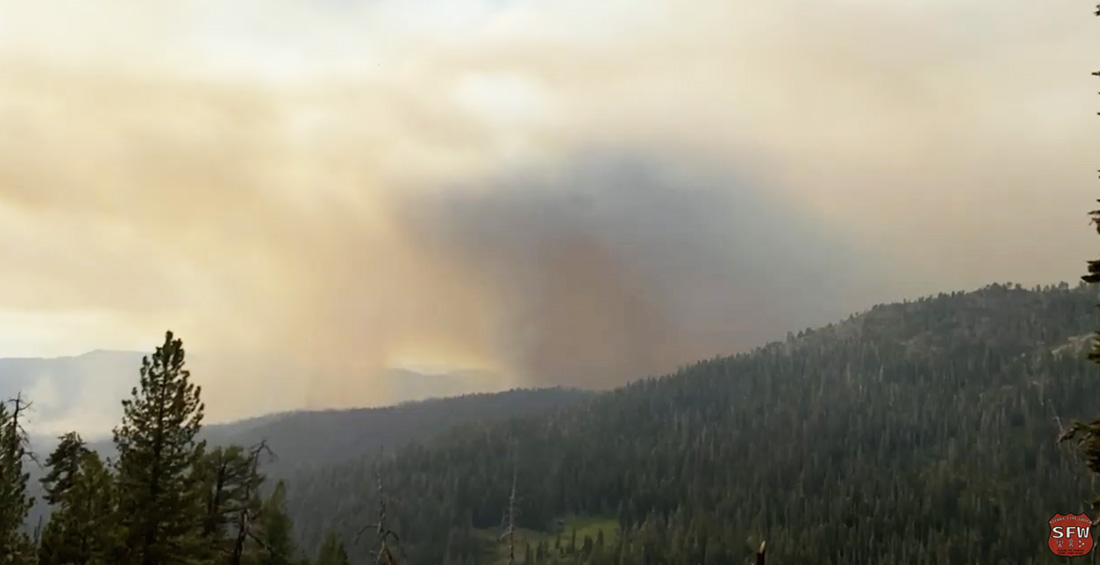
Smoke over the Washburn Fire is preventing air tankers from dropping retardant.
The FIRIS mapping aircraft reported at about 4 p.m. that the fire had grown to 1,384 acres
Updated 8:03 a.m. PDT July 9, 2022
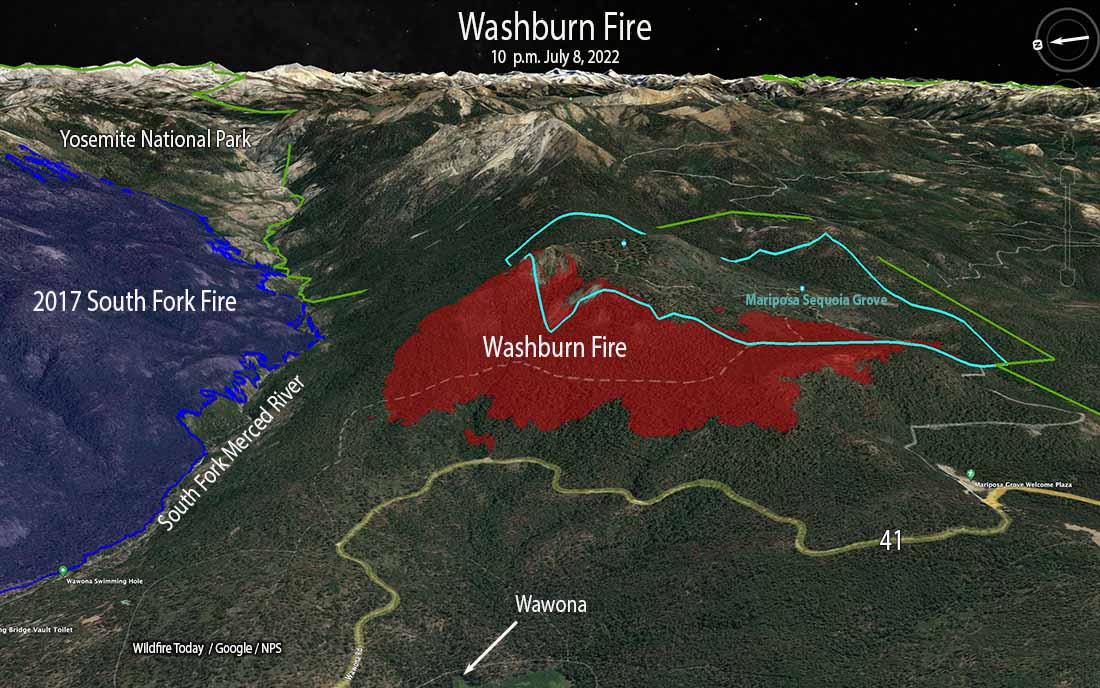
The Washburn Fire in Yosemite National Park in California was very active throughout Friday night and into Saturday morning. The photo below taken at dawn on Saturday shows a convection column of smoke, something you don’t often see over a wildfire at dawn.

The National Park Service, which often “manages” wildfires in Yosemite rather than aggressively putting them out, said they are fully suppressing this fire. California Interagency Incident Management Team 13 has assumed command, and additional firefighting resources will continue to arrive over the coming days.
A mapping flight at 10 p.m. Friday found that it had grown to 703 acres, a number that has no doubt been exceeded in the subsequent hours.
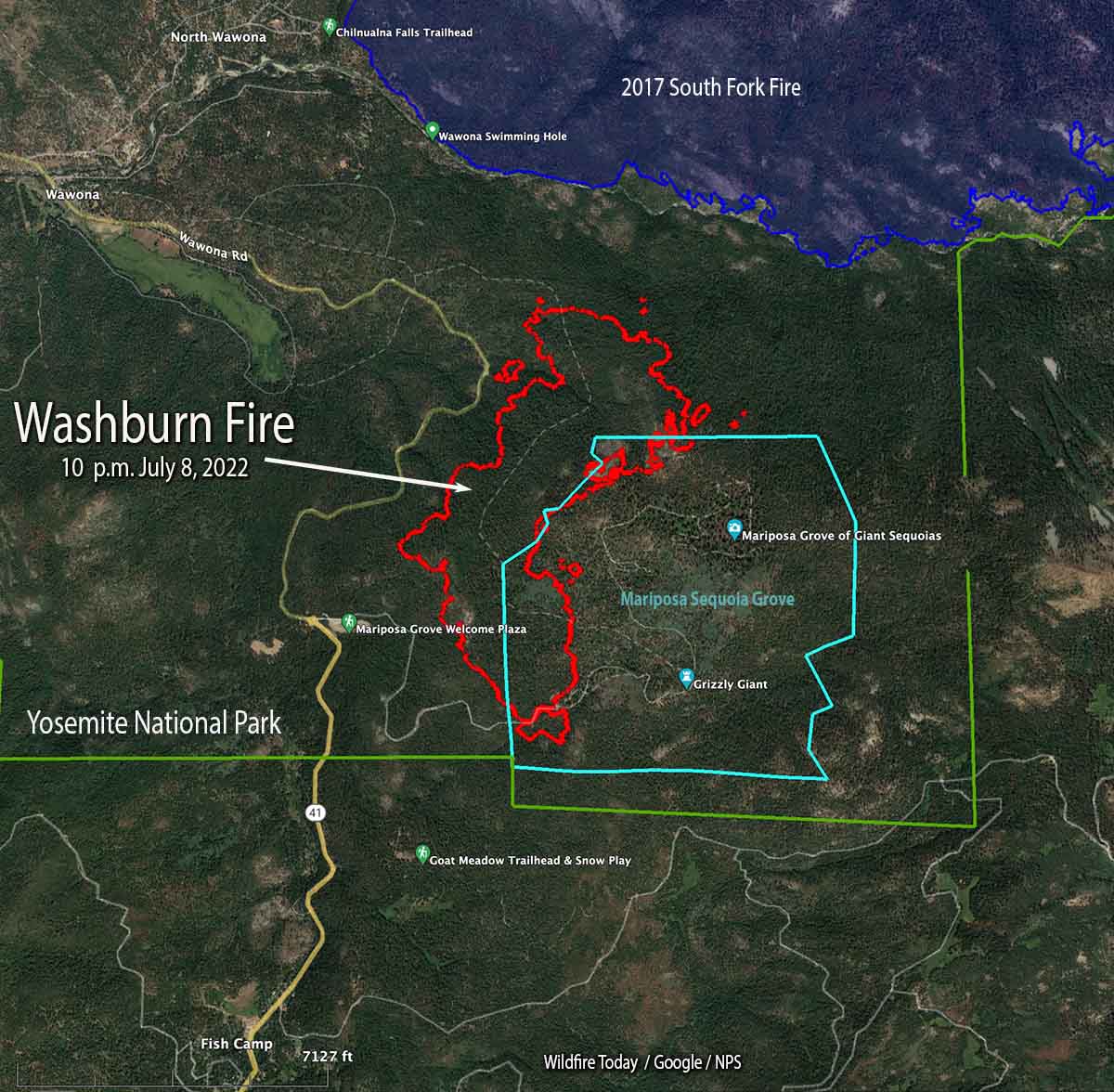
The overnight weather at the Fish Camp weather station south of the fire 1,000 feet lower in elevation, recorded a maximum relative humidity of 53 percent and light winds out of the west and northwest. The spot weather forecast issued Friday afternoon predicted for Saturday 82 degrees, 27 percent relative humidity, and 6-12 mph afternoon ridgetop winds gusting to 18 mph out of the southwest and west. This should influence the fire to continue spreading to the northeast and east.
Approximately 155 acres of the fire has burned into the west side of the 1,300-acre Mariposa giant sequoia grove. The Park Service has been conducting prescribed fires within the grove for years, including about seven since 1999. This should slow the spread in the grove and reduce the fire intensity compared to other locations that do not have similar recent fire history. It remains to be seen how much sequoia mortality will occur under the present low fuel moistures and “exceptional drought” conditions.
It appears likely that the blaze will reach the South Fork of the Merced River, the southern perimeter of the 2017 South Fork Fire, which should also slow the progression of the fire.

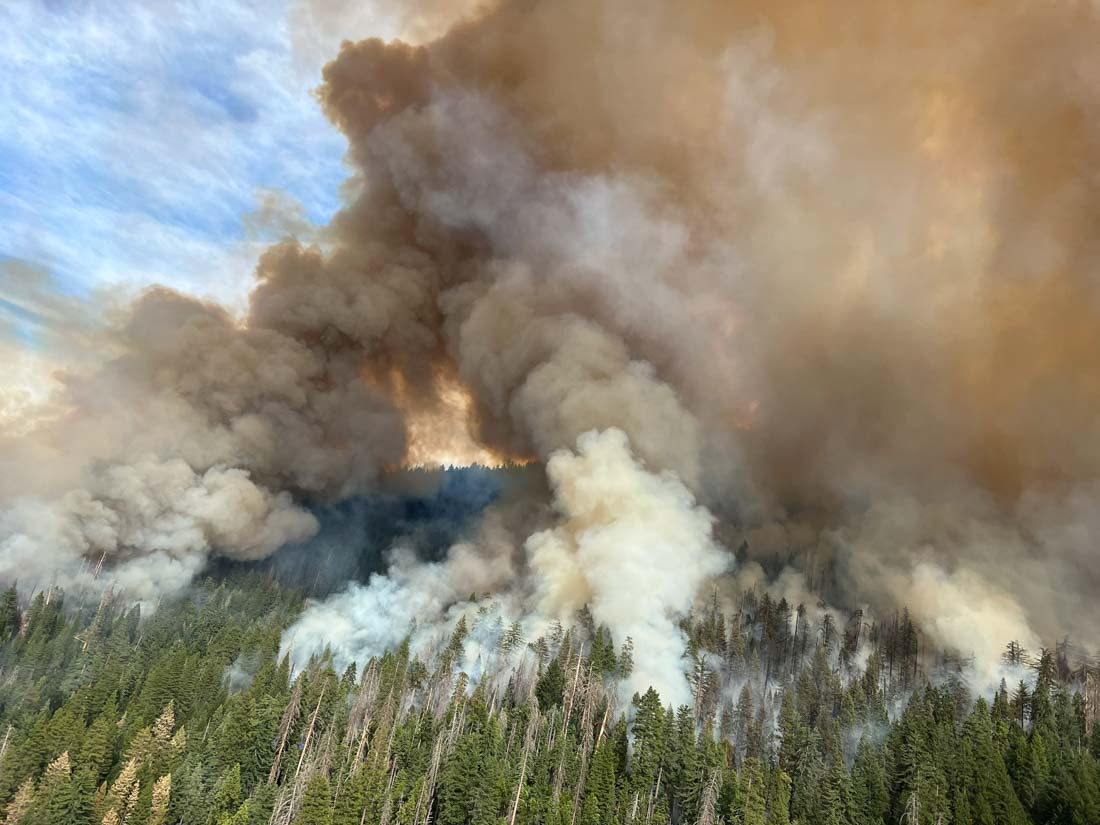
7:04 p.m. PDT July 8, 2022
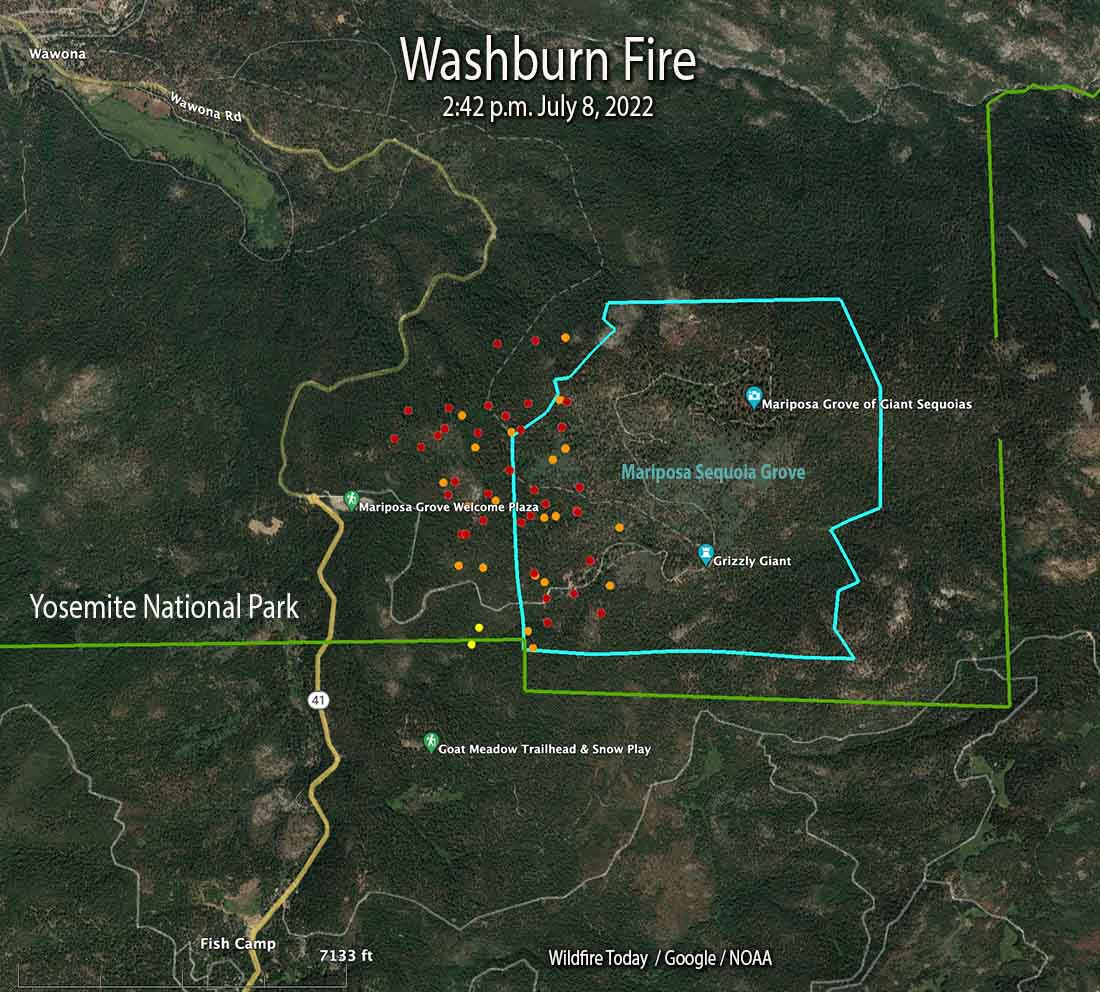
Another wildfire is burning in a grove of giant sequoia trees — behemoths that can live for 3,000 years. The Washburn fire was reported at 2 p.m. Thursday July 7 and by 4 p.m. Friday it had been mapped by a FIRIS aircraft at 466 acres. At least 150 acres of the fire are within the Mariposa giant sequoia grove in the south end of Yosemite National Park two miles southeast of Wawona, a community that is under an evacuation order. An evacuation map has been posted and the south entrance to the park is closed.
Preliminary surveys found that in a two year period, 2020 and 2021, almost 20 percent of all giant sequoias in their natural range over four feet in diameter were killed by fire (and neglect) or will die in the next few years. In 2020, 10 to 14 percent of the entire Sierra Nevada population of giant sequoia trees over 4 feet in diameter were killed in the Castle Fire. Early estimates after two fires the following year, the KNP Complex and the Windy Fire, 2,261 to 3,637 sequoias over four feet in diameter were killed or will die within the next three to five years.
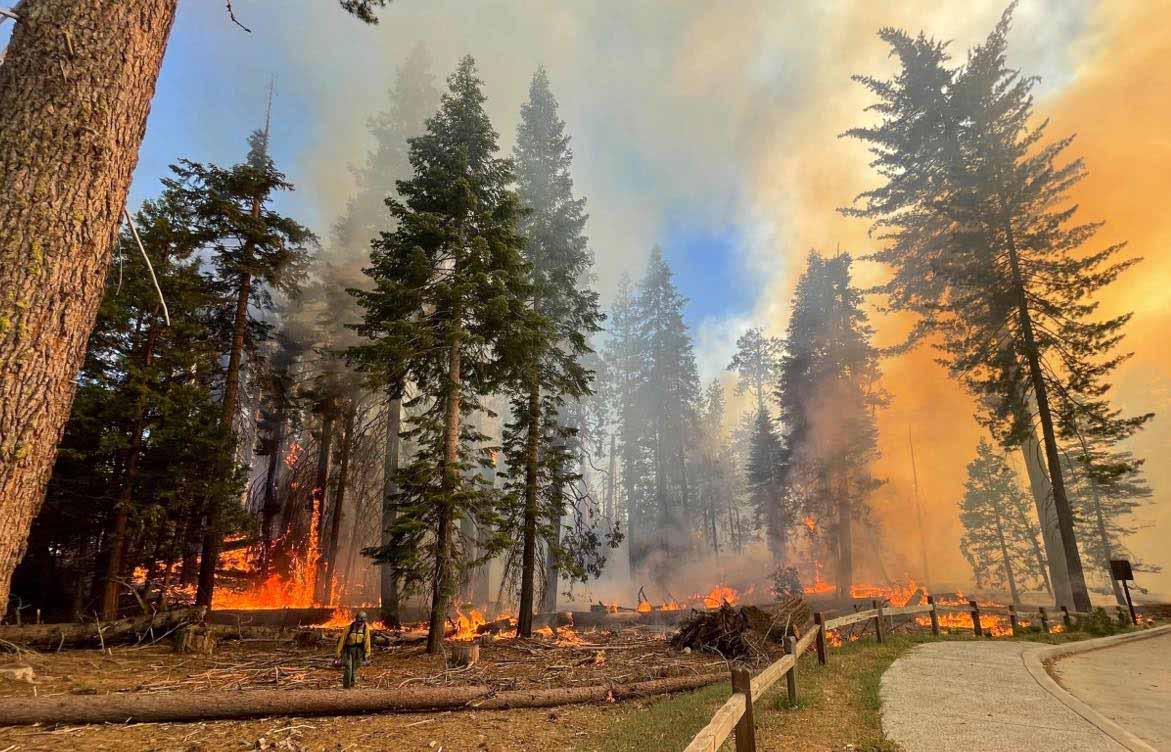
Aircraft report that as the activity on the Washburn Fire increased Friday afternoon multiple spot fires occurred near the South Fork of the Merced River and east of Highway 41, some of them 0.7 miles out ahead of the main fire. That river was the south edge of the South Fork Fire that burned 7,563 acres in 2017. Normally a fire would slow down considerably when it encountered a fire scar less than 8 or 9 years old, but the Electra Fire near Jackson, CA burned quite well earlier this week in a seven year old scar. It will be interesting to see what the Washburn Fire will do if it bumps the South Fork Fire footprint.

The National Park Service has conducted four prescribed fires east of the Washburn Fire, in 2003, 2004, 2006, and 2016 for a total of 295 acres. This would have reduced some of the fuel in those areas, which may slow the spread in those treated locations, reduce the wildfire intensity, and the mortality of the giant sequoias. The more recent treatments are the most effective for modifying the behavior of a wildfire.

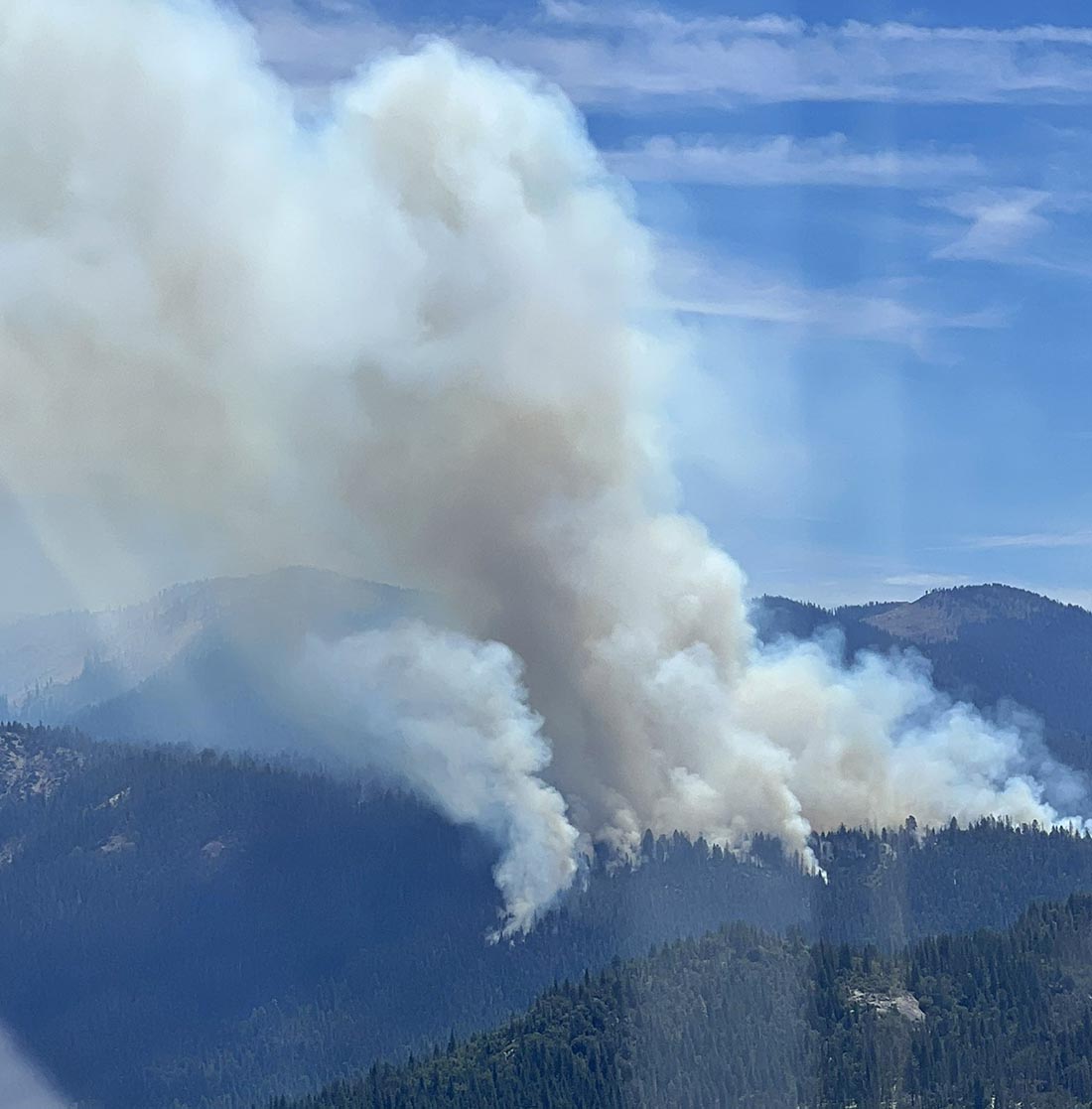
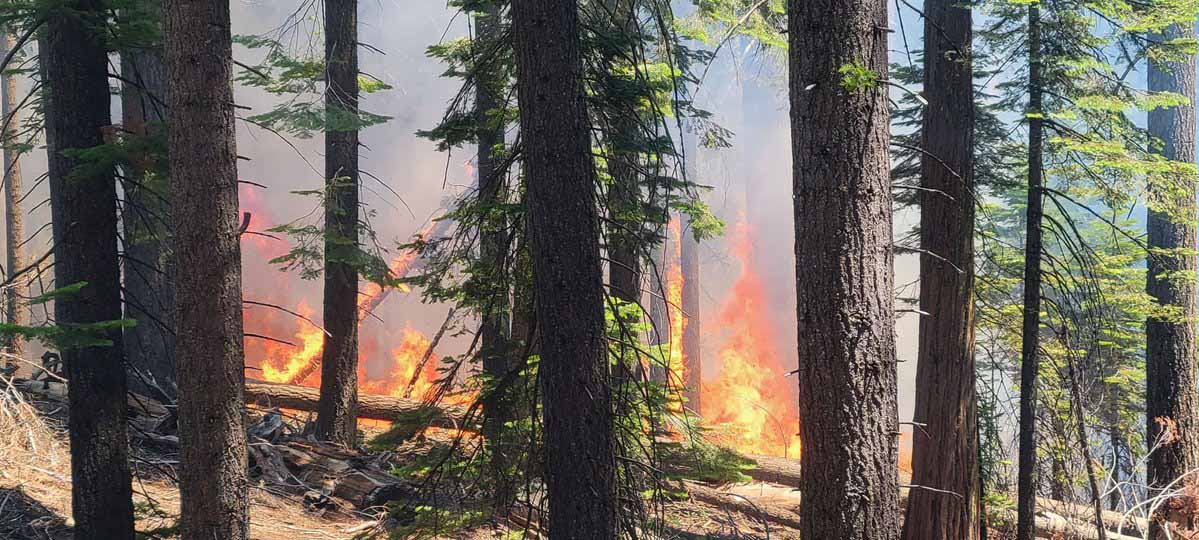
Information about the Mariposa grove of giant sequoia, from Yosemite Mariposa County:
The most famous tree in the grove is the Grizzly Giant, one of the largest trees in the Mariposa Grove and, at an estimated age of 2,700 years, one of the oldest living sequoia.
Beyond the Grizzly Giant sit hundreds of lesser-visited sequoias in the upper grove including the Clothespin Tree, the Faithful Couple and the fallen Wawona Tunnel Tree.

Not armchair firefighting, but want to know why the National Forests and Parks have not preplanned for the use of lone term retardant or machine use in restricted areas when this drought has been in effect for more than 3 years? One would think after the disasters in the Castle and KNP complex fires there would have been a lesson learned.
As much water as we can get for this one, I think. We can’t lose these Sequoias.
A photo of the Washburn fire:
https://i0.wp.com/yubanet.com/wp-content/uploads/2022/07/washburn-fire.png
Does this look like a healthy, actively managed forest to you? It doesn’t to me.
It looks like the ingredients of another catastrophic 100,000 acre-plus wildfire.
Even the Inciweb page notes the fuels on this fire as being “mixed timber with significant dead/down”.
Regarding forest health, the National Park Service is actually more dysfunctional than the U.S. Forest Service, if that’s possible.
Thanks for your comments. You have obviously done a lot of thorough academic research on the topic. Could you please share that science with us as they have done in the article? Perhaps some links or pdf’s of your published/ professionally reviewed articles and formal presentations?
I have learned much from this site and generally find it highly credible.
This article is hyperbole and lacks context/perspective.
Fire is a beneficial and natural part of the life cycle of forests, especially for sequoias. http://150.parks.ca.gov/?page_id=27588#:~:text=Fire%20helps%20giant%20sequoias%20in%20many%20ways.%20Small%2C,seeds%20inside%20them%20for%20up%20to%20twenty%20years.
The perceived adverse effect of unusually intense forest fires and the damage they cause are due largely to decades of misguided managment and/or neglect by agencies and people.
Further, all trees have life cycles, even trees that live as long as sequoias.
Finally, I would not that the existence and possible effect of “climate change” on forests/forest fires is greatly exaggerated if not entirely fabricated. I think it was on this site that I saw a study recently that reported recent supposed fires that were supposedly “extreme” due to “climate change” were strikingly similar to historical fires.
What is the correlation of the shutdown of so many logging companies and timber harvests in relation to hotter fires during this period?
Fires burn hotter because there is too much buildup of brush, fallen limbs, invasive species in forests; trees are growing far, far too close together, which means more fuel; and there are not “fresh” timber harvest breaks. I’m not talking about timber harvests in which brush has grown back on that do not slow down fires; I’m talking about fresh harvests that historically slowed down fires. Ask any old-logger or long-time timber industry people. Fresh timber harvests slowed down fires; the research that has been conducted has largely focused on timber harvests where brush has been allowed to grow and/or too much debris was left behind because of either not burning the excess material or careless logging.
Timber industry representatives in the 1980s and 1990s warned of these types of fires in the future. They were literally laughed at.
And, of course, climate change obviously has an effect. Whether you believe climate change is man-made, natural or a mix, it is a factor. It can reduce moisture levels, drying out timber and brush.
Climate change is a reality and unless we want to impoverish ourselves, we must learn to live with it. This means better management of forces. More strike teams near national forests that are irreplaceable. Big Basin burned, in part, due to poor forest management, lack of nearby and quick-reacting firefighting forces, etc.
In the 1980s, a concerted effort by the state of California was made to consolidate firefighting bases. We need to expand the number of firefighting bases that we have, helitak and aircraft bases, etc.
And we have to allow more timber harvesting. Fires have consumed far more spotted owls and endangered species than timber harvesting could have ever dreamt of doing. California and the USFS need to spend the money to safeguard our state and national treasures.
It looks like Mariposa will go the way of Big Basin, and spare me the photos of “forest regeneration.” These are catastrophic fires that will take two to three thousand years to return the areas to the state they were in prior to the fires.
It is inexcusable.
The fire has burned around the western edge of the Mariposa Grove not through it thanks to prescribed burning and thinning done over the last 20 years in there.
What did these trees do for thousands of years prior to our green pants armies saving them? Most fires including wind-driven, “devastating” large wildfires are not a new thang…
https://www.science.org/doi/10.1126/sciadv.abc0020